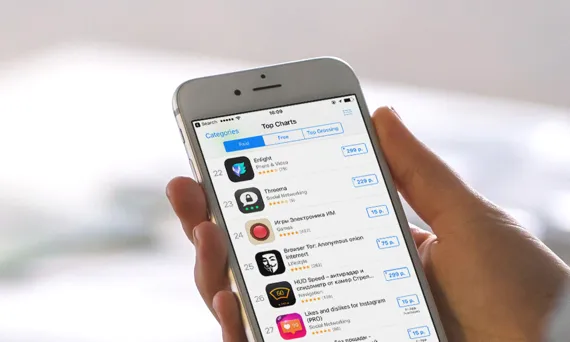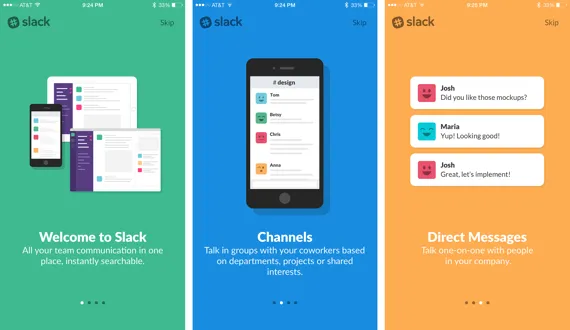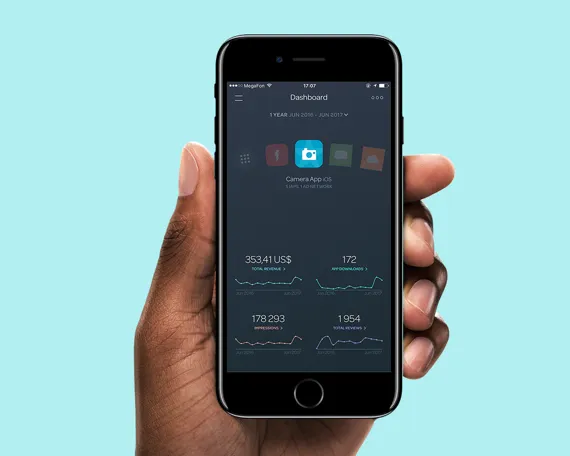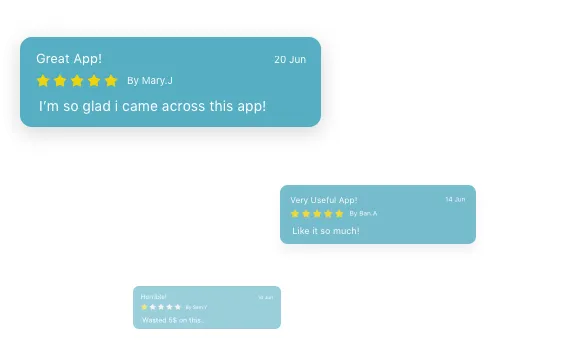The Price is Right
Setting The Price Scheme For Your App
Excluding anyone who does this as a hobby and wants to give it away, it’s time to figure out how
to monetize the app. Let’s look at the primary pricing models app creators use:
- Free (Apps): Get your users in the door quickly with a free download and then
collect
ad revenues. Just be mindful who controls the conversation here – you or the ad companies.
- Free (In-App Purchase): Same idea about getting new users, but here you have
the chance
to see a profit from the same users multiple times when you unveil new features or levels of
usability for your app. This is probably the most profitable method.
- Paid: You know every user will be paying for the value you bring them, but it’s
a kind
of one-and-done approach, as new revenue generation means constantly getting new users.
What else is important when it comes to price?
- Try different approaches to app costs. $0.99 is the standard, but fails to deliver any
impression of
your program being something “special”. Anything over a dollar tells the user, “you get more
value
here than you usually would”.
- Look at the competition. See how successful they are in their app pricing and use that
knowledge to
develop your own price strategy.
A big thing to realise is you don’t want to try and replace everyone. Let users use the built-in
calendar instead of forcing them to use one that only works on your app. People love mobile
technology because they can integrate everything into one system, so don’t attempt competition
against the mainstays of mobile technology. Focus on what your smartphone and/or tablet app is
supposed to do and skip some of those fancy, but unnecessary extras. Use what is already out
there to have your app fit the way your users are already using their phones. Also:
- The shortest distance between two points is a straight line, so always think about improving
user
experience by simplifying and cutting out unnecessary steps.
- Follow the latest trends and updates to make sure you are at the front of the pack when it
comes to
innovation. These devices, smartphones and tablets, are powerful little machines, so always
think
how to harness that power and the capabilities of new technology in interesting, new ways.
- Be clever or quirky. You’re always fighting against a massive crowd, so what makes you
unique is
often all you’ve got to stand out. Don’t be afraid of laughs and smart references. Your
crowd
appreciates the little things, and, importantly, passes the word on.
You Only Get One First
Impression
Onboarding
Just because someone downloads your phone app doesn’t mean their interactions go much farther
than that. You have to “onboard” users, which means get them to download and then, more
importantly, continue to use your mobile app. That means that first usage is key to keeping this
relationship going long-term. Walk your users through their first use. Show them around, give
them the tour they need to make sure they see everything there is to offer. Don’t make it
mandatory, because some users want to explore on their own, but make sure everyone can navigate
between small bits of information and go back if they miss something the first time around. Get
Users Involved
- Allow them to make the application theirs. Select a colour palette, register a username, or
something that makes them feel they don’t have the same thing as everyone.
- Social Media. Have them link it to what they’re already using. Everyone loves integration.
- Thank them with a freebie. If they get through the tutorial, reward them, even if it’s with
something they get anyway. It makes people wonder what else there is to be had if they keep
exploring.
- All Work and No Play… Turn it into a game, which just means make users feel they achieve
something.
Something as simple as usage statistics and a couple benchmarks (100 connections, 50
messages sent,
etc.) gives users a sense they should keep going to reach the next “level”.
Have an Analytical Mind for
App Development
Using And Learning From Data
Just by virtue of having an active app, you are going to have all sorts of new data to play
around with. So, what are you looking for?
- How do your users behave? What do the people who use your app long-term have in common? Is
there a
difference in devices? Age groups?
- What features in your app are people using? Is anything just a complete miss? Is that
because they
don’t like it, or they just don’t realise it is there?
- Is your app running properly? Is it crashing? Are there lots of errors? Are your users
running for
help from your support? Why?
- Are things simple enough? Are users following the same logic you built to get them where
they want
to be quickest, or are they going through circuitous routes to get there?
- How’s your pricing? See any significant changes as you experiment?
- Where are users coming from? Is Facebook driving your downloads, or is it a dud?
- If you want help, try using tools like:
- Try making minor changes, using controls and following the scientific method to fine tune
what
you’re doing, rather than simply making sweeping overhauls of your product. This goes for
your
marketing, graphic design and user experience. No stone should be left unturned, but don’t
hurl the
stone down the mountain in frustration either.
Build Brand Loyalty
How To Establish A Following
Mobile users love to find new and exciting apps, but once they find a good one, they can get
pretty loyal following that app, its success and its evolution. You’ve got a great opportunity
to spread the word through such people, so make sure to treat them well and make their job of
passing on the good news as easy as possible. This means:
- Keep the conversation going. Use forums and discussion groups to keep talking with people
who face
the problem your app will help them overcome. Have some good canned responses and phrases.
Your
followers will pick up the lingo and that ensures a somewhat consistent message.
- Find the people who are pushing your app. Look at who’s taking advantage of your in-app
purchases.
They are using your app to the fullest, so throw them a freebie every once in awhile to show
you
appreciate.
- Don’t be antisocial. Don’t set alarms and notifications that go off late at night, or spam
anyone’s
inbox or social media. No one likes those guys, so don’t be one of them.
- Stay fresh. Even if users don’t think your app is perfect, if they see support is
forthcoming and
there is an effort to make things better, you’re going to have people ready to see what else
you
have to offer.
The Good Word
We’ve touched on the effectiveness of a good word-of-mouth campaign, but let’s dig a bit deeper
into what makes this approach, as well as other, more traditional methods.
Build Your Street Cred
The Word Of Mouth Approach
The neverending “discussion” exists that you should get involved in, but the truth is this is
never one monolithic idea that can only be approached in one way. Think of a politician and how
their message is, in general, the same, but somehow its delivery is very different at the golf
course than it is in the processing plant. That’s what we have to think about now. What are the
many different ways people could view the app, the company and the problem we solve. We are
going through the who, what, where, when, why and how of the matter, and each question could
have many answers. Say your app shows people where to recycle old mobile app manuals. How would
they approach this? Well, in several ways:
- Recycling
- Cleaning house
- Going paperless
- Dissatisfied with the advice about my app
And, of course, there are many other sides to that coin, but very quickly we see several
different audiences are addressing several slightly different problems with the same solution.
That means they are going to look for that solution in different venues, whether they are
discussion groups, forums, news outlets, etc.
Get a Professional
Using Journalists And Bloggers
The internet has brought a form of democracy in getting your message out there, but that doesn’t
always mean people are going to automatically listen. For that, at times, you might look to
someone like a journalist or a blogger who does have an existing following and might be
interested in what you’re selling. Try to find people who:
- Are speaking to the audience you want. Don’t waste your time looking for everyone to publish
something about you. Find people with a reasonably large group of active readers. Make sure
just
because they have a podium to shout from that people are listening.
- Willing to listen. It may seem obvious, but go for low hanging fruit and find people you or
your
colleagues might know. If there is some personal or professional connection, they’re far
more likely
to hear you out. Also, try and at least call to get in touch, otherwise you may find your
emails in
a lot of spam and junk folders.
Know Your Niche
Narrowing Your Targeting
It’s very important you know what makes you special. This goes back a bit to when you picked
your category before you launched your app, but really think about how your application excels.
Then get yourself into some “Best of…” lists, because most users want to see and search for that
kind of easily digestible information. See what kind of lists are out there in which you think
you belong, then get in touch with the author and see if he agrees.
Dom’t Lose Sight of Who is in
Charge
Follow Google
You should always keep tabs on how well your keywords are doing, but you can also use features
like Google Alerts to see when people mention you or relevant topics. If you can get in touch
with people who have written recently, you’ll find a much more receptive audience.
How’s Everyone Else Doing
it?
Studying The Apps Competition
You should now have a good idea of where your traffic is coming from, but using something called
“backlinks analysis” you can see where your competition’s traffic is coming from too. To do
this, you can use tools like:
-
Ahrefs Backlinks Checker -
free, but
only the paid version
will give you the whole picture
-
Similarweb - the free
version is
effective in giving
you an understanding of traffic sources
If you see your competitor has a whole lot of people linking to their app or homepage, that
means lots of people out there are interested, and you should be app to convince some of them to
link to you too!
Make New Friends
Establishing Partnerships
Chances are that you and some others are trying to reach the same people. With our example app
from earlier, there are people interested in getting rid of all sorts of other things, so it
seems other apps in this category might present us with some good opportunities to collaborate
without anyone stepping on anyone else’s toes. If a partnership seems worthwhile, you can even
integrate your apps together, sending users their way and seeing new users come in from their
app to yours. Just remember, you can’t bribe users to download someone else’s app, just like you
can’t do it get good reviews.
The Holy Grail
Getting Featured
The best way to get the word out is when the App Store or Google Play does it for you. This is
called “Getting Featured” and is a pretty big deal. These apps are considered the best in the
business, so you need to work hard and really make sure you’re in top fighting shape if you want
a chance at this. There are a few “shortcuts” though:
-
Align your interests. Apple and Android are always coming out with something they
are excited about, whether it is a new hardware or software. If you can find a way to
really tap into something in your app and use it to show that feature’s full potential,
you can get those companies interested in showcasing you (to showcase themselves).
You just have to follow all the latest news and updates really closely to know when
you can take advantage of this.
-
Reach out to them directly. Apple and Android have experts who are looking for great
apps all the time, but it doesn’t mean they always find them, or at the right time. For
that reason, if you think you’re really onto something, go ahead and write. Just be
careful not to harass them, because that can get you blacklisted pretty quickly.
-
‘Tis the season. Are you willing to add some red and green accents, or change your logo
to feature a glass of eggnog to deliver a yuletide feel to your app? Some people claim
that seasonal apps perform better at that time of year, so if you think yours is centred
around a certain holiday, make sure not to let that slip under the radar.
-
Just give it away. The App Store and Google Play sometimes have a special place for app
developers who are willing to offer their apps for free over the course of a day or
week, but there is even more serious competition for this than usual.
Friends, Lend Me Your
Ears
The PR Approach To App Development
Users are being constantly bombarded with information from all sorts of different outlets.
However, rather than overwhelming people, this has led to the audience being very receptive to
trends in the media and whatever is “hot” at the moment. When you think about a strategy, it’s
important to realize that the perception of “news” and what is newsworthy is not what it used to
be.
-
You can make news, using what you know and what you have by way of your app. This is
a good way to really tap into a team’s potential, so look at who you work with, what they
know and how good they are at expressing themselves.
-
Create stories that highlight your knowledge. You’ve got to where you are because you
know about something. Write about it and use it to demonstrate your expertise. Readers
will understand you have a deeper understanding of what you do and appreciate the advice.
-
Don’t see this as self-promotion. Anything you write should be worthwhile for readers
and users. That constant bombardment means users are far more discerning and can easily
see through pure advertising. The idea is offering something users will enjoy or use.
Think about what works:
- Controversy
- Humour
- Creativity
- Utility
- If you are hitting one or more, then you are on track to achieving a win with your
audience.
-
Try to address the many problems and approaches we discussed at the beginning of this
section. As we mentioned, attacking the problem from several angles diversifies your
audience and offers you more opportunities to create unique content that all leads to
one solution: your app.
-
When thinking of new topics to write on, use similar approaches as before. Find that ongoing
discussion, read lots of articles from competitors and on similar topics, then write your
own version. You may be saying similar things, but your voice and your insight are what
separate you from the crowd, so use that to maximum effect.









